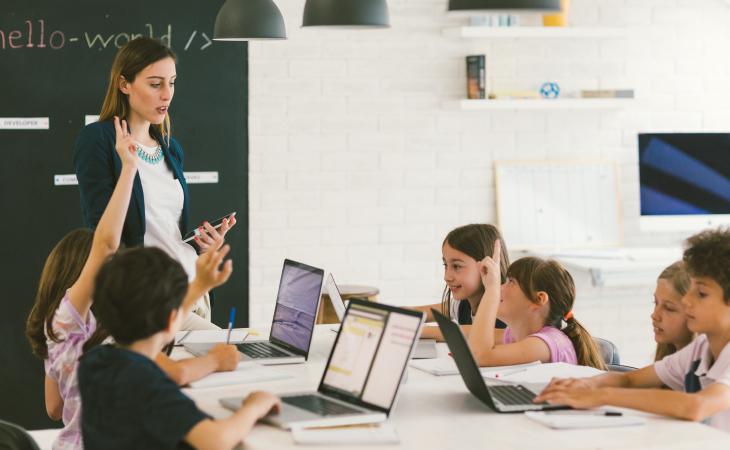This website uses cookies so that we can provide you with the best user experience possible. Cookie information is stored in your browser and performs functions such as recognising you when you return to our website and helping our team to understand which sections of the website you find most interesting and useful.
News
How Designers Are Rethinking Classrooms and Other School Spaces
Education is ripe for innovation. Whether it’s how we teach kids in K-12 or how higher education is preparing students to tackle 21st-century challenges, there’s been a lot of focus in the past couple of years around education. Reform, revamp, rework – rethink.
Take for example a recent opinion piece in the Tallahassee Democrat entitled “Design and Environment Important to School Success.” The author, an educator, wrote:
“It often seems that the architecture of a public school and its surrounding environment are given very little thought, as if it really doesn’t matter. Teach in a gravel pit, teach in a barn, teach in an auditorium, teach in a warehouse, teach in a cozy room with a fireplace, it’s all the same. Well, it is not all the same.”
Which brings me to Design Connections – Education.
Last month’s conference was squarely focused on the future of schools’ design. How should today’s schools be structured? What makes for an effective classroom?
Here are my top 3 takeaways from the presentations and the conversations.
New designs for new generations.
There was a lot of discussion about how the old “sit and listen” method that dominated the way that Baby Boomers, Gen X, and Gen Y were educated is obsolete. Even the Z generation coming of age now incorporated some higher-tech education (think Kahn Academy, for example) while being raised on iPads and social media.
Now comes Generation Alpha, who are practically tethered to tablets and smartphones and super-connectivity. Traditional teaching methods are just not going to cut it anymore.
The conversation at Design Connections centered around rethinking how classrooms are configured to incorporate more activities and hands-on learning experiences. Designers in the education space are also starting to think about portable classrooms (beyond the old trailers) and what kinds of spaces we want our children to learn in.
Building healthy spaces.
Much as there has been priority put on building healthy workspaces, there’s now a huge push around healthy schools. In fact, the Environmental Protection Agency (EPA) has a series of tools around creating healthy indoor air quality in schools.
Some of the specific issues discussed at Design Connections include healthy occupancy, good ventilation, getting more light and fresh air into schools and classrooms, and looking for low VOC products that can be cleaned without extensive use of chemicals.
The role of lifelong learning.
The discussion at Design Connections about reconfiguring space wasn’t just about K-12 students but also how to design flexible enough spaces that they can be used by multiple generations at different hours of the day. This also led into some of the technology that these spaces increasingly have to support – from virtual learning to biometric security.
Budgets (and innovation) are key.
We all know that education budgets are typically tight, which means that innovation is key. A number of the firms represented at Design Connections work globally, which meant an opportunity to have conversations around reaching students in different places around the world. In the education design sector, innovation isn’t just about thinking through the “ideal” school. There’s also a critical need to identify how to build, on a budget, pleasant spaces with desks, chairs, floors, walls, and other work surfaces that are attractive and easy to clean.


